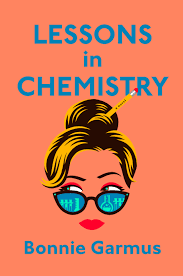Chapter 19: December 1956
byIn December 1956, the unique upbringing of Madeline Zott unfolds, shaped by her mother, Elizabeth, a fiercely independent scientist determined to raise her daughter in a world filled with curiosity and unfiltered truth. Their home is not just a sanctuary but also a hub of exploration, where every interaction is an opportunity for discovery. Elizabeth’s parenting philosophy is rooted in the belief that children are like sponges, capable of absorbing vast amounts of knowledge when given the freedom to explore. Unlike conventional households, their day-to-day life includes discussions on complex scientific concepts, the mechanics of life, and an emphasis on critical thinking. Madeline, a child wise beyond her years, thrives in this unconventional environment, while their loyal dog, Six-Thirty, watches over her with a protective instinct born from shared experiences of loss and love.
Balancing this experimental parenting approach is Harriet, the family’s housekeeper, whose cautious perspective often clashes with Elizabeth’s laissez-faire attitude. Harriet frequently finds herself torn between admiration and bewilderment as Elizabeth allows Madeline to explore the world without the constraints of traditional boundaries. Whether it’s Madeline climbing a tree to understand gravity or conducting a makeshift experiment in the kitchen, Elizabeth encourages her daughter to embrace the unknown. Harriet’s more conventional outlook serves as a counterpoint to Elizabeth’s progressive methods, creating a dynamic household where the lines between safety and exploration are constantly tested.
Elizabeth’s scientific mindset doesn’t stop at parenting—it defines her identity. Her approach to life, science, and motherhood intertwines seamlessly. While society often expects women to conform to rigid roles, Elizabeth refuses to be boxed in. She introduces Madeline to subjects ranging from quantum physics to human biology, believing that knowledge is a tool for empowerment. Her commitment to teaching Madeline the complexities of the world goes beyond textbooks, incorporating real-life applications and philosophical discussions. This belief is reinforced by her interactions with Dr. Mason, an old friend and confidant who admires her resilience. Dr. Mason recalls Elizabeth’s days as a competitive rower, highlighting her discipline and tenacity—qualities she now channels into single motherhood.
As Elizabeth navigates her roles as a scientist, mother, and widow, her internal struggles remain evident. Calvin’s death casts a long shadow over her life, leaving her grappling with grief while striving to create a fulfilling life for Madeline. Dr. Mason’s suggestion that she return to rowing ignites a spark of introspection. Could revisiting her past passion help her heal and regain a sense of self, or would it merely remind her of the life she had lost? For Elizabeth, this proposition is more than just an athletic endeavor; it’s an opportunity to reclaim a part of herself that has been buried under the weight of her responsibilities.
Madeline’s precocious nature mirrors Elizabeth’s own relentless pursuit of understanding. The child’s curiosity is both a reflection and an extension of her mother’s scientific mind. Madeline approaches the world with an unfiltered lens, seeing connections and patterns that others might overlook. Her interactions with Harriet, Elizabeth, and Six-Thirty create a tapestry of relationships that highlight the complexities of love, learning, and growth. In one poignant moment, Madeline’s chalk drawing—a colorful depiction of her “life story”—captures her perspective on family, nature, and even loss, showcasing the depth of her understanding despite her young age.
Six-Thirty, the family dog, is more than a companion; he is a symbol of loyalty and resilience. His watchful presence provides both emotional support and physical protection for Madeline during her explorations. Through his silent vigilance, Six-Thirty becomes an integral part of the family’s journey, representing the unspoken bonds that hold them together.
As the chapter draws to a close, Elizabeth considers Dr. Mason’s invitation to rejoin the rowing team. The decision symbolizes a crossroads in her life—a chance to reconnect with her past while forging a path for her future. The narrative captures Elizabeth’s quiet defiance against societal expectations, her unwavering dedication to her daughter, and her determination to live authentically. Through her resilience and unorthodox methods, Elizabeth continues to challenge the norms of her time, leaving a legacy that inspires not only Madeline but also those around her.
This chapter paints a vivid picture of a family navigating the intersection of science, grief, and individuality. Elizabeth’s refusal to conform, paired with her love for Madeline and her dedication to truth, creates a story of resilience and hope. Together, they embody the spirit of exploration and the power of breaking free from societal constraints to pursue a life of meaning and authenticity.


